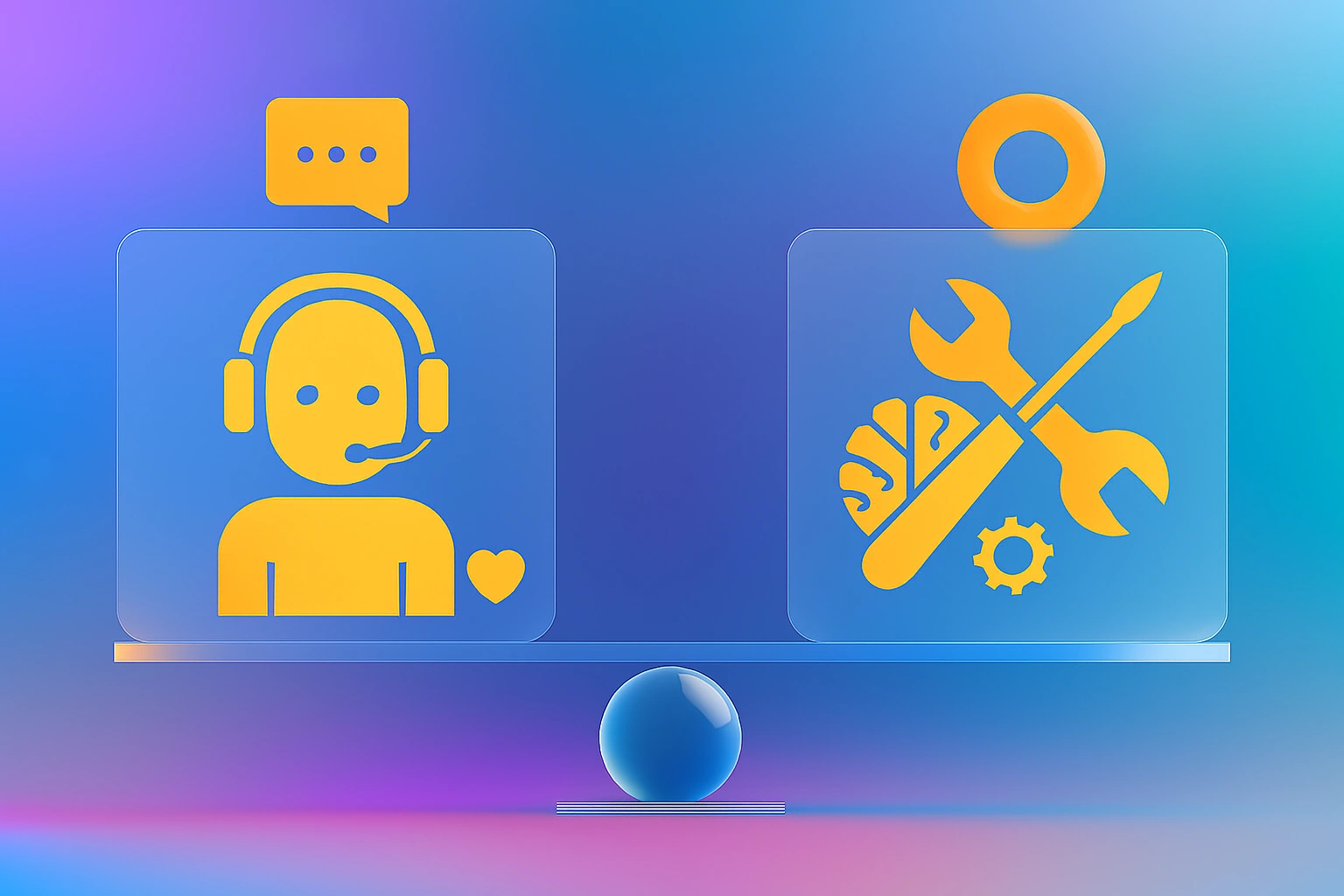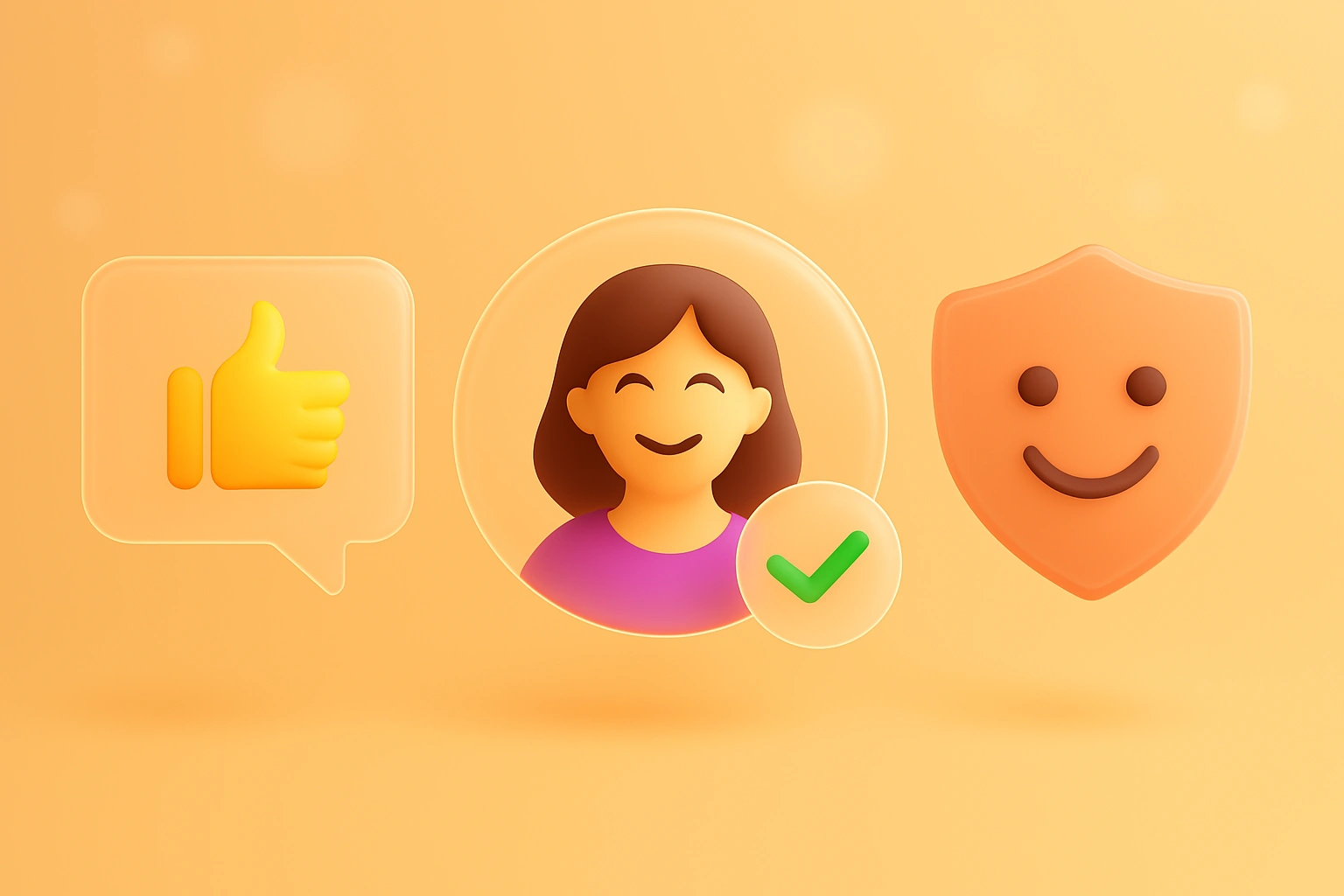How to Ask for Customer Feedback: 7 Best Methods & Examples
- December 9, 2020
- 21 mins read
- Listen

Just think without such information how businesses would struggle to figure out what’s working what isn’t and how they can improve their processes.
Another important concern is how exactly you get your customers to share their honest feedback and what do you do with that information once you have it?
As per Gartner, “Companies that implement customer experience projects begin by focusing on various ways they collect and analyze customer feedback.” However, having knowledge about how to ask for customer feedback determines its real value.
Customer feedback is an invaluable asset for any company. And getting feedback from your customers can help you to know how to serve them in the best way possible. The best way to measure customer satisfaction is by analyzing customer feedback.
Before we jump into the significance and different methods of obtaining customer feedback, let us know what exactly it means.
What is customer feedback?
Customer feedback is defined as the insights about satisfaction or dissatisfaction your customers experience with your products and services. It is considered as the guiding resource or hidden opportunity for businesses to improve the loopholes and address the customer needs.
Collecting user feedback via different methods is crucial for all businesses. How you ask customers for feedback and analyze them determines planning new strategies for your business. You will definitely want to know where are you getting right or wrong in the eyes of customers.
What is the purpose of customer feedback in your business?
Studies show that each unhappy customer shares their experience with 8 to 10 others. It can lead to a huge loss to your business. And with the huge social media usage, negative feedback can spread like wildfires and hence damage the reputation of your brand.
How to ask customers for feedback can help in collecting valuable insights that help in knowing your customers’ perception about your brand and deliver the best customer experience.
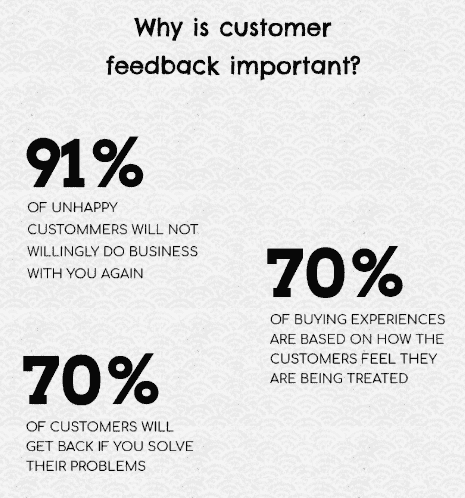
Here are the key reasons that show the importance of collecting customer feedback.
- Understand customer journey: Collecting customer feedback provides valuable insights to understand the entire customer journey and their changing behavior to gain insights into building better products.
- Reduce customer churn: How to ask customers for feedback and analyze it helps identify unhappy customers and detect areas where to improve that reduce customer churn.
- Identify the areas of improvement: Identify the gaps between the customers and the business. With meaningful client feedback and the ability to eradicate problems, you will end up with a product that is sheer perfection.
- Measure customer satisfaction: Based on feedback, businesses can measure customer satisfaction scores. They get to know their opinions regarding their products or services.
- Develop customer loyalty: Getting feedback from customers shows that you value their opinion and they feel more attached to the company, which further builds customer loyalty.
But the caveat here is, in order to make your customers feel valued, you need to implement customer reviews and feedback for business decision making.
Why do customers avoid giving feedback?
Customers tend to avoid giving feedback. Yes, it’s true. As per a study, nearly 95% of them will leave as soon as they are asked to provide an online review for a product.
Frustrating! Right? Feedback is very important for businesses to understand how their products/services are performing and without it, they will not be able to understand what to improve and what not.
Now, there are reasons for which customers tend to avoid leaving their valuable feedback, and knowing these beforehand will help you plan accordingly. I am listing down the reasons below:
- Many times, customers believe that companies don’t listen to them, so their feedback will be of no use.
- Frequent feedback popups irritate them.
- Feedback forms often are too lengthy and detailed.
- Asking for feedback at the wrong moment.
- Many times, giving feedback becomes too time-consuming for customers due to unstructured feedback forms.
- Customers may worry about potential critical repercussions for giving negative feedback.
- Many times when customers are satisfied with your service and don’t have any complaints, they are not bothered to provide feedback.
- Until something exceptional happens, be it good or bad, customers often don’t feel like sharing their thoughts.
- Many technical obstacles like slow loading speed, or complex interfaces may deter customers from completing the feedback forms.
How to ask for customer feedback in the right way: methods & examples
“A satisfied customer is the best business strategy of all.” ~ Michael LeBoeuf
Customer feedback is the core of any business and is one of the main factors of growth. When you see positive feedback examples on any site or portal, you realize how much value customers can have on your business. Let us discuss the best practices on how to ask customers for feedback.
Right from the structuring feedback questions to asking the various methods on how to collect customer feedback, let’s discuss the right way of blending them to get meaningful feedback.
1. Ask for feedback at the right time
One of the key aspects of asking for feedback from clients is “time”.
A great moment to ask for feedback is right after a customer service conversation. You are already in a conversation with the user so it feels natural to ask for feedback – not about the specific customer service intervention but about their experience with your tool in general. ~ Stefan Dubois
Approaching customers at the right time to obtain feedback is crucial as it helps to gather more meaningful feedback.
Just assume if you are to request client feedback which of the two scenarios will make more sense?
- Asking clients for feedback immediately end of the conversation or a product demo.
- Requesting feedback after 2 days after the interaction or purchase.
Obviously, the former one. would not make any sense as the customer might have moved away.
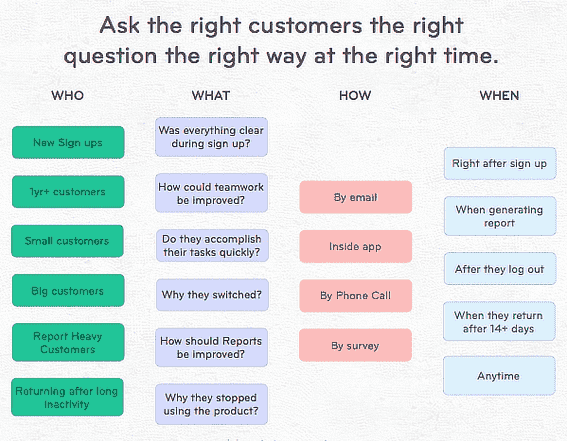
Note: Never ask customers for feedback in the middle of any process. You should not interrupt them in the midway. So, the ‘mind the time’ rule is very important while asking for feedback questions.
The best times for asking for customer feedback
- Just after the live chat conversation ends: After every live chat session, you should ask for feedback about how was their chat experience.
- After a successful transaction: When a successful transaction checkout happens, you can request feedback.
- Ask after the service ticket resolution: Once the service request is resolved, the customer is happy. You can take advantage of this time to obtain genuine feedback.
- After a product demo: Just after the demo, you can ask for feedback about their experience in evaluating the product.
2. Choose the right methods for obtaining feedback
Selecting the right customer communication channels can connect with your customers and help to gather authentic feedback. You can’t rely on a single channel as there are plenty of channels such as websites, social media, live chat, etc.
You need to identify the channels based on the preferences of your target audience. Asking customers for feedback across their preferred channels helps you to focus on the specific channels to deliver excellent customer service.
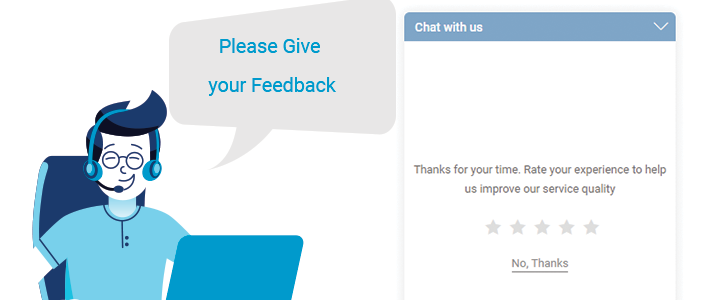
Identifying the feedback method helps businesses in the following ways:
- Collect real-time feedback: With methods like live chat, in-app, or chatbots, you can obtain instant feedback just after every conversation. It helps to understand the customer experience and satisfaction level.
- Monitor first-hand feedback: Choosing social media monitoring as a method to get feedback will provide unfiltered comments from the customers. It helps to who are admiring or criticizing your brand and you can reach out to them proactively.
Implement REVE Chat and collect genuine customer feedback after the end of the conversation or checkout. Sign up with REVE Chat to gain customer feedback and improve your business process.
3. Reach out to the right customers
Segmenting your customers is imperative before you reach out to them. Identifying who is your brand promoters and detractors are crucial to tailor the approach to connect with them.
You need to prepare a separate set of questionnaires to obtain relevant feedback from each group. It is never wise to ignore any of the groups. HBR says, “Acquiring a new customer is anywhere from 5 to 25 times more expensive than retaining the existing one.”
NPS surveys are the best ways to follow up on the detractors, who are really not happy with your product or service. The feedback collected from them can be a hidden opportunity to improve the products and retain them.
Tips to gather honest feedback from the segmented audience.
- You must create personalized follow-ups or automated response workflow
- It is recommended to respond or contact detractors personally
4. Prepare the right set of questionnaire
Prior to asking questions, you need to identify the actual purpose of asking for feedback from customers. Whether you are trying to improve your website, offer better customer support, or shape your product roadmap, getting feedback from your customers is something that can’t be ignored.
Asking specific questions helps you to get more relevant feedback. You can also analyze the voice of customer examples and see how businesses listen to customer insights and act upon the feedback.
Often the way you ask the questions determines the kind of answer you get back. You need to decide on setting open-ended or closed-ended questionnaires.
- Open-ended questions – These questions are broad and can not be answered with a one-word ‘yes’ or ‘no’, instead require bit detailed answers. Using these questions helps you understand things from the customer’s perspective as you get descriptive feedback. For example, “What do you think about the products?”
- Closed-ended questions – These questions are narrow and can be answered with a single word or a pick from limited multiple-choice options. For example, “Are you satisfied with this product?” → Yes/No/Mostly/Not sure.
Knowing the right use of open-ended and close-ended can help you to get actionable feedback.
If you are a part of a marketing, product, or sales team, asking the right questions via online polls and surveys helps you collect qualitative feedback to create better user experiences. That eventually results in business growth and increases sales conversions.
5. Value your customer’s time
Generally, customers avoid providing feedback as it is time-consuming. Asking lengthy and irrelevant questions can annoy customers and they might turn out midway. When and how to ask customers for feedback is a key mantra to be followed. It shows timing is essential for customer feedback management.
Reaching out to customers and respecting their time makes a world of difference.
Key points to consider while asking customers for feedback:
- Don’t ask irrelevant questions – Keep your questions open-ended to know what the customer thinks about your product or service. Ask relevant questions that serve your purpose and get better responses.
- Keep the conversation short and focused – Keep the feedback process simple with minimum questions to get accurate answers. Keeping your surveys short will also encourage more customers to complete them.
Here are some tips you can follow to make your customers feel valued and happy.
- Share or send a personalized thank you note for spending valuable time providing feedback. It has a positive impact always.
- You can also incentivize them with some discount coupons, free gifts, and content resources to make them feel happy.
6. Escalate customer feedback to the right team
Simply gathering data won’t do you any good, how you analyze makes the difference. The data needs to be handed over to professional analysts who can generate valuable insights for you. Once you have these insights, you can use them to create a better product or to improve customer service.
Also, these insights will form the basis of your future business planning. Essentially, once you receive consumer feedback you need to
- Discuss the customer feedback internally so as to improve the quality of products or services
- Involve all the team members of various departments to give an extended picture of customer expectations
- Identify the gaps between your business and customers. Plan new business strategies to shorten the gaps and gain more customers.
7. Collect customer feedback regularly
Consistency is always an important factor in ensuring success. If you consistently send out client feedback, you’ll have more information about the problems with your product.
However, you must keep in mind not to do it very often. You don’t want to send feedback forms so regularly that your customers get frustrated and unsubscribe from your mailing list. According to our estimates, sending feedback forms quarterly or half-yearly yields the best results.
Now that you know how to ask for customer feedback in the right way, let us discuss the different methods to collect customer feedback. Regardless of the method you choose, the key to obtaining meaningful feedback is to guide the discussion sufficiently to keep the conversation on topic and avoid it devolving into a venting session.
Let us discuss the different feedback methods that can be used depending on your business needs.
Customer feedback methods
Prior to starting to gather client feedback, it is very important for you to understand why you are seeking their reviews and feedback. Identifying your desired outcomes and outlining the process to get there, sets the groundwork for investing your time because, without a clear intention, your feedback may not be fruitful.
What is the proper way to ask for customer feedback? Here is a tip for you. Make sure that you put forth the best way to approach your customers and then manage customer feedback. We have created a list of customer feedback methods to get inputs:
Live Chat
Live chat is the most preferred channel by customers to reach out to the business for sales and support assistance. So, using chat surveys could be one of the best feedback-collecting methods. You can ask for customer feedback just after the end of the conversation to know about their chat experience and the agent’s performance.
You can collect feedback in other ways other than star ratings. You can ask a couple of short questions that can provide you detailed feedback about the live chat experience of the customers. Following the chat support tips, placing the live chat could be your product page, pricing page, and your checkout page, so you can answer queries instantly and reduce cart abandonment.
Email feedback
Email is one of the most convenient ways to gather customer feedback as it is still a popular support channel for most businesses. You can use each interaction as an opportunity to obtain customer feedback. You can ask for feedback after a successful transaction or can send email surveys.
You can collect the most relevant feedback via email as it enables you to send one-to-one requests so you can request personalized feedback. For example, enquire about issues that customers are struggling with most or what features they want to be added.
In-app feedback
“There are two kinds of people in the world. Those who walk into a room and say, ‘There you are’ and those who say, ‘Here I am’.” The same applies to institute in-app feedback.
In-app feedback is a great way to gather relevant information from users as they have the product experience. Collecting feedback from customers who are already using your products is always worthwhile. Providing them a way to share feedback with you from within the context of your product makes this type of feedback especially valuable.
It may be used to improve the usability of any particular feature The main value is the immediacy of the feedback given the user’s context within your product. The feedback will tend to be more concrete, and users may be more likely to provide quick responses.
Website feedback
Customers prefer to land on the website when they want to know more about any brand. You can collect insightful feedback from website visitors that can guide your product and service development in order to provide customers what they really want from your business.
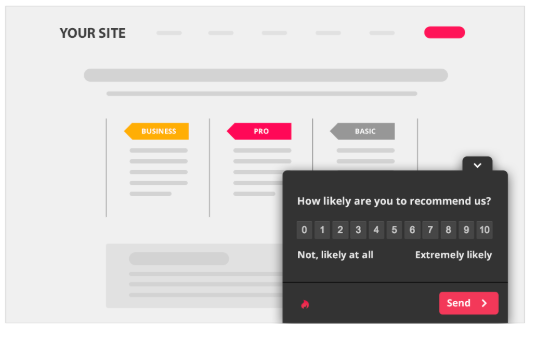
Gathering customer feedback also helps you identify and fix problems with which customers complain about your products or services. You can strategically place live chat, pop-up surveys, or offer incentives in terms of coupons or eBooks to encourage them to give valuable feedback.
SMS
Business SMS is one of the best channels for collecting customer feedback about your products or services, customer service, and overall brand experience. If compared between business text messages and email, email has a low response rate and an average open rate of 20%.
Businesses can use suitable SMS marketing software to gain customer feedback by sending business text messages and text surveys at timely moments during the customer journey. In order to get quick feedback, keep your text survey messages short. Forbes says, “80% of customers have abandoned a survey halfway through, but shorter SMS surveys may encourage more completions.”
Customer interviews
Big businesses that have budget flexibility can arrange customer interviews. Collecting feedback from loyal and repeat customers is easy, as they have your brand experience and are happy with your products and services.
You can obtain genuine feedback from these clients. So, you need to segment your customer profiles based on their nature, interests, and frequency. Make sure that they are approached by your human agents and feel important to increase the chances of getting authentic feedback.
Market research
Conducting market research helps in getting feedback from all kinds of buyers to understand their changing behavior, and identify their likes & dislikes. Once you know your customers better, you can position your current marketing and messaging to serve them better.
Doing market research on how to ask for customer feedback can give your business key insights into your strengths and weaknesses. Using the insights in the right way will help your business thrive and grow.
Focus groups
Focus groups are a research method used to gather feedback and opinions from customers. Each person in the group is encouraged to participate in a discussion that was previously planned by a researcher and guided by a facilitator.
These groups are typically used to gauge opinions and gather information from users about products, services, and features before they have been developed.
You can use focus groups to get customer feedback on a new product or service before they decide to take the concept into development. In this context, a focus group can be used to test out ideas and gather opinions on whether the idea will be liked or needed by the target audience.
Social media monitoring
Social media is great for communicating with your target audience, as they are part of Facebook, Twitter, and Instagram communities. Customers prefer sharing their good and bad brand experiences across social channels like Twitter and LinkedIn.
Ignoring them across social channels can risk your brand credibility. Adopting a social listening strategy as a feedback method helps to find out what customers are sharing online while mentioning your company so that you can take the appropriate action.
Social media monitoring can be the best way to obtain customer feedback, look for trends, and create stories. Here, you can hear directly from customers. It’s unfiltered. Monitoring the social media channels ensures you find out exactly where and what conversations are happening, so you can join in to either provide support or praise your loyal followers.
Examples of customer feedback questions
How to ask for customer feedback in a survey? The questions in your feedback form should be designed with your main objectives in mind and tailored to the type of business you have. You may look into the sample questions here as a reference.
- How satisfied are you with our product/service?
- How would you rate your overall experience with us?
- Did our product/service meet your expectations?
- What do you like the most about our product?
- Were your questions addressed promptly and effectively?
- How easy was it to browse our website?
- Was your order delivered in good condition?
- How likely are you to recommend our product/service to others?
- How likely are you to purchase from us again?
- Were our promotional offers beneficial to you?
- What did you enjoy the most about our products/service?
- In what areas do you think we could make improvements?
- Do you have any additional suggestions for us?
How not to ask customers for feedback
Anyways it’s tough to get feedback from the customers. But while opting for it make sure you avoid the below-mentioned points.
- Don’t make lengthy feedback forms that are time consuming to complete.
- Stop being pushy. Bombarding customers with too many popups for feedback collection will not work.
- In your feedback form, don’t use complex words that are difficult to understand.
- Don’t force customers to provide personal information if it isn’t too necessary.
- Ask to-the-point questions. Don’t make it vague, otherwise you will never get direct answers.
- Avoid designing your feedback questions in a way that subtly encourages only positive responses.
- Don’t make it a mandate to complete all the fields in your feedback form.
How does REVE Chat help to collect instant customer feedback?
Collecting customer feedback helps you get outside your own comfort zone and see your product from the customer’s perspective. Good feedback has the power to close the loop and build better relationships with your customers. While the feedback that you collect might not always be positive, it will help you to improve your business.
Put insightful thought into crafting your questions so that you not only collect feedback but collect valuable feedback. REVE Chat is a great omnichannel customer engagement platform that helps to collect instant customer feedback on your website, mobile app and other social media platforms such Facebook, WhatsApp, Viber, Instagram and Telegram. Not only that, REVE Chat’s AI powered chatbots makes it completely automated for you. REVE Chat allows you to obtain client feedback to improve the loopholes in your business and improve brand credibility.
Want to give it a try? Sign up with REVE Chat today to avail a 14-day free trial!
FAQs on getting feedback from clients
1. What are the most common methods of requesting feedback from customers?
Asking for feedback from your clients can be done in various ways such as:
- Online surveys
- Email surveys
- In-app surveys
- Interviews
- Social media polls
- Feedback forms
- During live chat sessions etc
2. Why requesting feedback from customers is important?
Customer feedback is a great way to understand how your products or services are performing. No one can give you the right information except those who are using it- your customers. They are the ones who can provide a clear picture about whether your products are successful or not and what are the improvements areas to work further.
3. How can you make your feedback more engaging?
- Here are some tips for you!
- Add a clear CTA (Call to Action)
- Make it to the point.
- Use an attractive layout.
- Keep the sentences short and simple.
- Provide a very simple interface to complete the submission process.
- Make it personalized.
4. What should be your next steps once you get feedback from your customers?
It’s great to gather customer feedback but don’t keep it aside. Just act on it. You can follow the below-mentioned steps.
- Thank your customers for sharing their valuable feedback with you.
- Analyze each feedback to find out common patterns and problems.
- Start working on further improvements and upgrades.
- Let your customers know about your recent improvements in services.
- Follow up with your customers if they are still facing issues or are happy about the upgrades.
5. How should you handle negative feedback from your clients?
Feedback from your clients can be both positive and negative. Once you get some bad reviews, don’t get disheartened. Take it positively and work hard to turn them into positive ones. Here are some useful tips for you!
- When a customer is giving negative feedback, listen calmly, rather than being defensive.
- Offer the customer an apology and start working on the feedback.
- Take immediate steps to solve the matter.
- Once you have a solution, reach out to that customer to inform him that you have solved his issue.
- Never get hurt by negative reviews. Remember that such feedback always helps to improve more.


